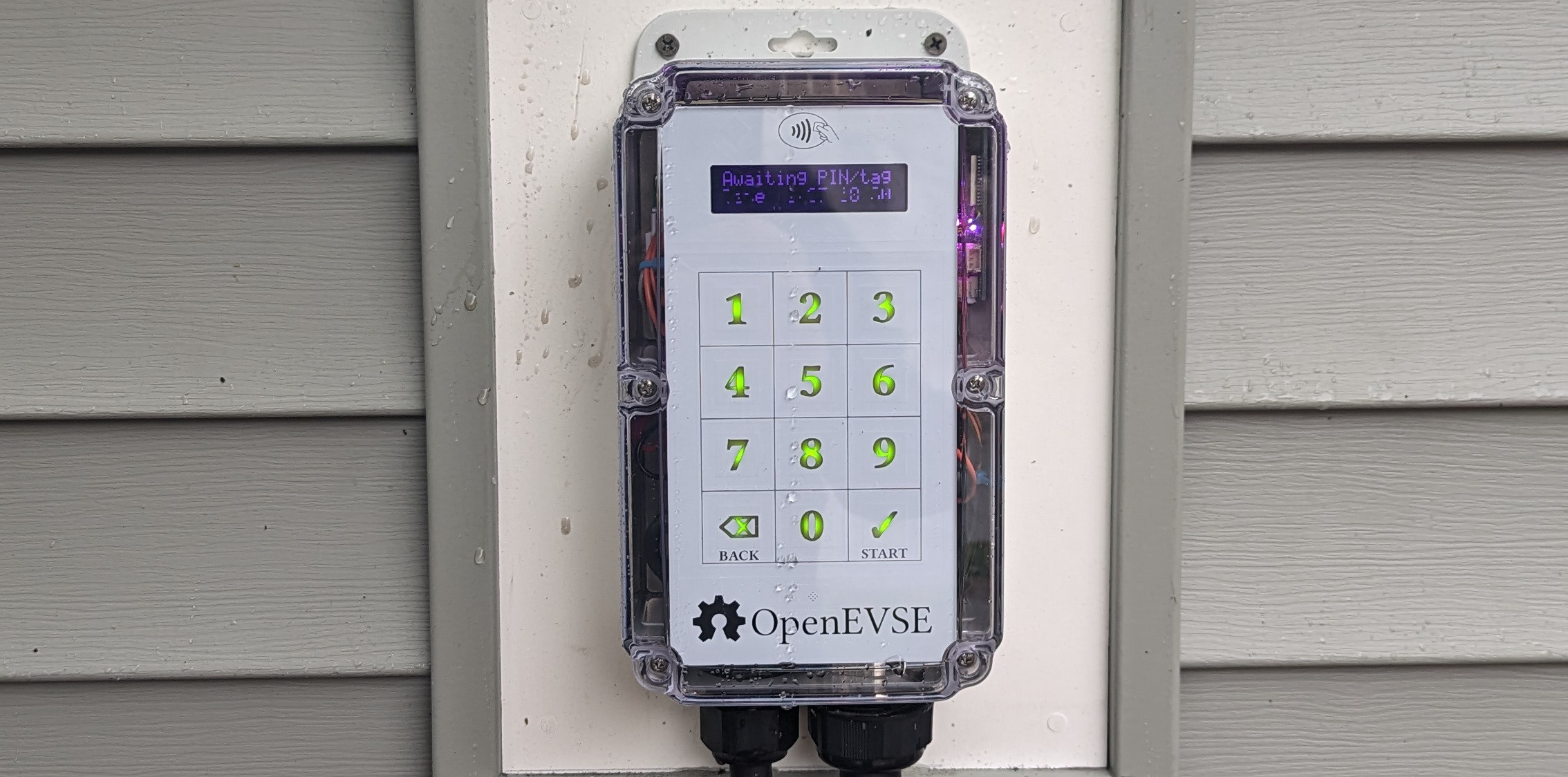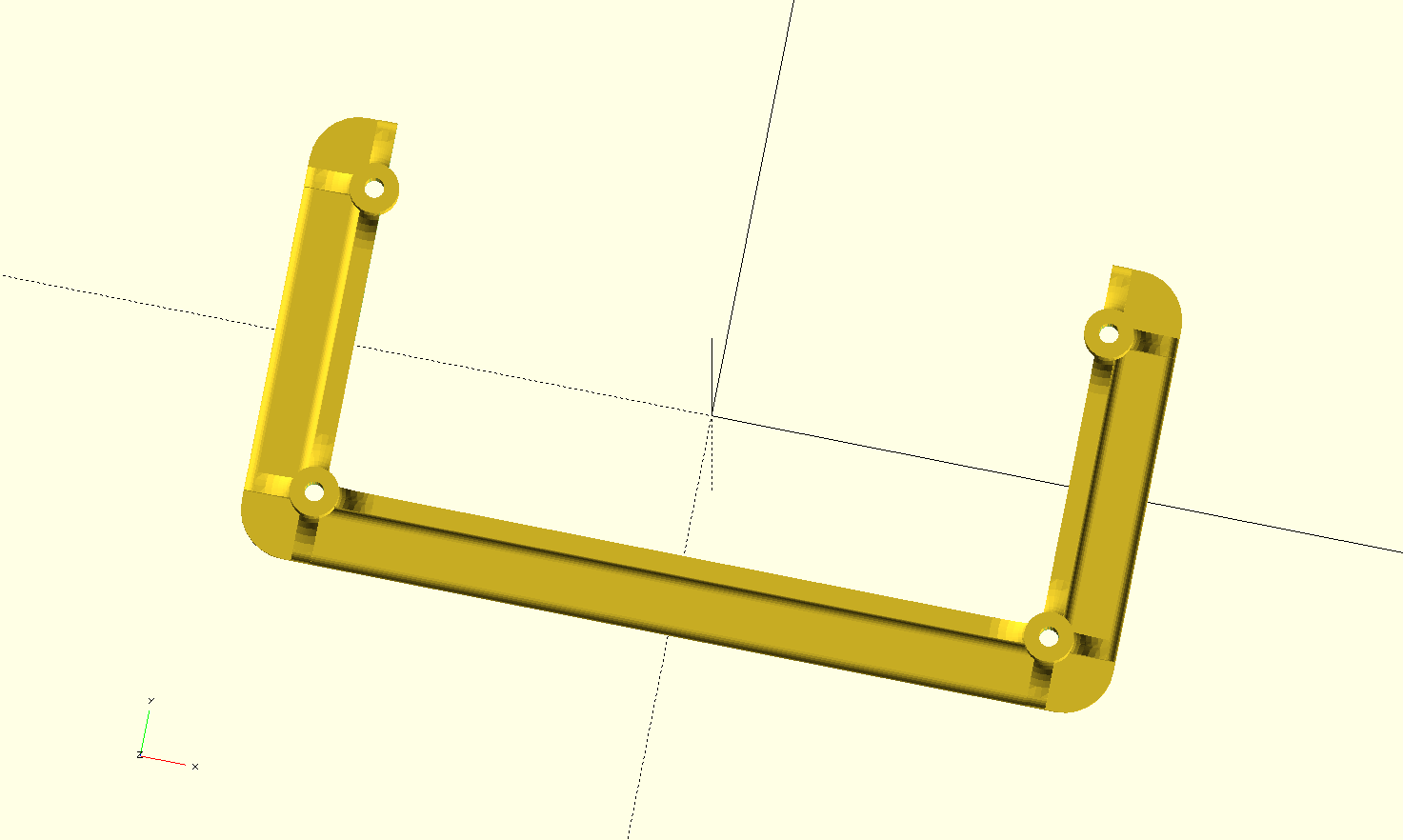Thing tracker at https://cscott.github.io/thing-tracker/#/thing/c6539aa6-b8c7-4adf-a22c-1baba5bbef97
There is a Hackaday page for this project.
Discussion in the OpenEVSE forum at https://openev.freshdesk.com/support/discussions/topics/6000067515
This repository contains hardware design files for a capacitive keypad and RFID reader for OpenEVSE hardware.
More details can be found on the Hackaday page for this project.
You will need to purchase a new Polycase ML-58 enclosure, although the only part we will need from it is the clear front cover. (Perhaps we can arrange a special purchase of just the cover if demand warrants.)
You will also need to purchase or have the Keypad PCB fabricated. The
KiCad design files are in the Keypad-Front
subdirectory. It's a four-layer PCB, and I recommend white silkscreen
to avoid heating when in direct sun. I used 1oz copper on a standard
1.6mm thick PCB. I found that JLCPCB had
very reasonable prices.
I assume you also own an OpenEVSE Advanced Series and have assembled it.
You will also need an LCD mount, which can be 3d printed. You might be able to reuse the one from your existing OpenEVSE device, but you'll need to pry the glue off then cut down the top bar. It's probably easier just to print a new one.
For compatibility with the latest OpenEVSE web interface, you will also need to update the firmware on your main OpenEVSE controller board. This is out of scope for this guide, but you can find instructions HERE. It's a good thing to do between step 3 and 4 when you have your OpenEVSE charger disconnected and open.
You will also need an I2C cable from the OpenEVSE Wifi board. If you have the latest-generation WiFi board, this will be a STEMMA-QT cable (JST-SH, with 1.0mm pitch). Older boards had an 8-pin JST-PH connector (2.0mm pitch) and you will have to fabricate an adapter yourself.
TODO: photos here
Unplug your OpenEVSE. Don't try to do this with your OpenEVSE still connected to mains power!
Remove the old printed blue cover from your OpenEVSE. Disconnect the cable leading from the OpenEVSE main board to the LCD display.
TODO: photo here.
Unscrew the LCD module from your old device and screw it onto the new LCD mount. You will then need to attach the new LCD mount to the Keypad PCB, using the silkscreen as a guide. I found that hot glue worked well, but other adhesives are probably fine as well.
TODO: photo here
You will now attach the Keypad PCB to the inside of your new clear ML-58 enclosure cover. I found that placing the board inside the cover and then using generous drops of hot glue around the screw bosses secured the Keypad PCB in a reversible manner, so that I could still remove it if I needed to later.
TODO: photo here
If you're braver, a clear contact-sensitive adhesive tape (3M makes a number of different types) would make a more permanent bond. Eliminating the air gap between the front cover and the Keypad PCB is said to yield better performance from capacitive touch sensors, but the hot-glue method has worked well enough for me.
You will need to connect two cables:
- The LCD cable that you removed in step 3.
TODO: photo here
- The I2C cable from step 2, from the OpenEVSE Wifi board to the STEMMA-QT-compatible ports on the Keypad PCB.
TODO: photo here
Screw the cover back on the OpenEVSE!
TODO: photo here
You'll need to reflash the OpenEVSE to the latest firmware. The good news is that you can do this over the web interface!
TODO: instructions here
TODO: instructions here
The Keypad PCB also contains an MCP9808 temperature sensor and pads for a DS3231MZ real-time clock. Some older versions of the OpenEVSE hardware contained an MCP9808 daisy-chained from the LCD module and secured to the front cover. If your hardware is like this, then you can use the MCP9808 on the board by connecting the LCD display to this port on the keypad PCB:
TODO: photo here
You should be able to use your existing cable, but if you have to purchase or fabricate a new one, it's a STEMMA-QT compatible JST-SH (1.0mm pitch) on the Keypad PCB side. On my example, it was JST-PH (2.0mm pitch) on the LCD side, and you can buy an appropriate cable from Adafruit.
Similarly, newer versions of the OpenEVSE hardware omit the real-time clock which was present on the original OpenEVSE LCD modules. The justification is that, with ubiquitous network connectivity, you don't need to pay the steep price (~$10) for a clock chip when instead you can just ask the network what time it is.
However, if you have intermittent network connectivity at your installation site, you might want the peace of mind of knowing that your usage timestamps will always be correct. Because the RTC chip is not cheap, it is not populated on the keypad PCB by default, although all of its support components are present. You can buy an appropriate chip (Digikey part link) and battery connector (Digikey part link) and hand-solder them onto the footprints provided. While you've got the soldering iron hot, you will most likely want to remove the MCP9808 chip present on the Keypad PCB, since as far as I'm aware all of the LCD modules missing the RTC also have the MCP9808 already present on the LCD board. You don't want two MCP9808s trying to talk on the same I2C bus.
After adding the RTC, you'd connect the I2C cable from the LCD module to the Keypad PCB just as done for the MCP9808 above.
These designs are licensed under the CC-BY-SA-4.0 like the original OpenEVSE designs.

